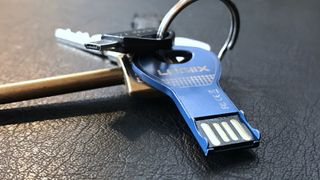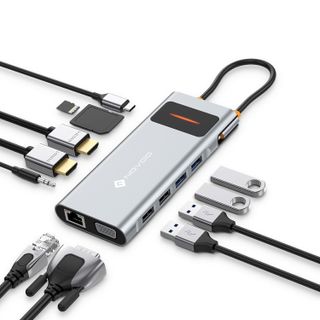Apple, I’m not ready to switch from USB-A yet – so why on earth does the new M4 Mac mini only have USB-C ports?
Okay, listen. Maybe I’m in the minority here; I still use and like USB-A. I know the EU wants to drag me kicking and screaming into a glorious utopian future where every device is powered and connected solely via USB-C cables and nothing else, but I’m just not ready to give up my sweet asymmetrical haven of yore. give. Tell me, Tim Cook, where are the USB-A ports on the new M4 Mac mini you just announced?
That’s right: the next-generation Mac mini looks like a beautiful little device – small enough to fit in your hand! – but Apple has officially ended its long relationship with USB-A, replacing the previous model’s two ports with more USB-C ports (five in total). It’s a big change, one that goes hand-in-hand with Apple redesigning its ‘Magic’ accessories to include USB-C instead of the old proprietary Lightning ports (yes, the Magic Mouse charging port is still at the bottom, but I’m not kicking that particular hornet’s nest at the moment).
I get it. Even as a long-time Apple critic, I can honestly say this is a good move by the company. Moving to a unified connection standard will help with cross-platform connectivity, reduce monopolistic influences within Apple’s tightly controlled hardware ecosystem, and most importantly help address the growing problem of e-waste. This is a good thing. This is a good thing.
I keep telling myself that – and make no mistake, I’m very happy to see Lightning go to the big electronics store in the sky – but there’s a part of me that’s disappointed when I see a new version of Apple’s best product see (that’s right, I said it) arriving without a USB-A port in sight.
USB-A still matters
I didn’t want to go into this article without statistics to back me up, so I did what everyone seems to do these days: I asked Google for help. According to Google’s generative search results, there are many reasons why USB-A is still widely used around the world: familiarity, backward compatibility, and cost are the main reasons.
Okay, not only did I ask an AI to help with my argument and call it a day, but Google’s bot does make some good points. USB-A is cheaper to produce and many devices (including my own desktop and laptop) still have compatible ports. It’s no surprise that many manufacturers still sell products that use USB-A or have USB-A ports. If you buy a wireless mouse from another brand, chances are the included cable will connect to a power source via USB-A rather than USB-C (we’re not talking USB-B).
It’s also worth noting that while USB-C is quickly becoming the new norm in Europe and the US, this is not the case for the rest of the world. Many countries are essentially ‘behind the curve’ when it comes to computer hardware, and USB-A is still the norm there. In fact, even the National Health Service in my country is still remarkably outdated in terms of the technology it uses; I saw a ton of USB-A ports when I was in and out of the hospital for cancer treatment.

Don’t even get me started on flash drives. I know I’m not the only one still using them, and all the devices I have use USB-A. I have all kinds of projects and old files backed up, plus a few with install-ready Linux distributions and even one with a full Windows 10 image. When I brought this up in a meeting, my boss (the effervescent Matt Hanson) asked how long it had been since I’d used one. I said ‘three days ago’. They are useful and I don’t want to throw them away.
A loving farewell
Now you’re probably thinking: Christian, what’s wrong with a USB adapter or dock? And yeah, sure, I don’t really have a good response to that, other than to say that I already have enough little gadgets that I can’t keep up with, and you want me to add more? I don’t have that.

But as much as it pains me to admit it, it may be time for me to finally say goodbye to my beloved OG connection stand. In the tech world, progress is king, and USB-C represents the rare kind of progress that is actually universally good: the environmental benefits alone are a huge plus, and anyone who knows me will attest that I can always get behind something. that helps break up monopolies. Oh, and I won’t miss it old USB-A superposition.
That being said… come on, Apple. You can’t charge $29 for a USB-C cable, especially when I can basically buy the exact same product ten dollars on Amazon. You are now sitting at the family table. Play nice.
